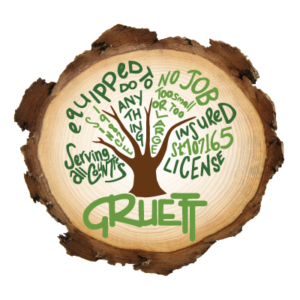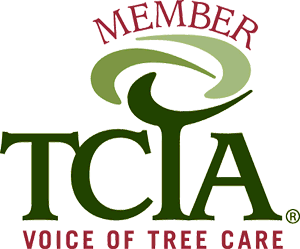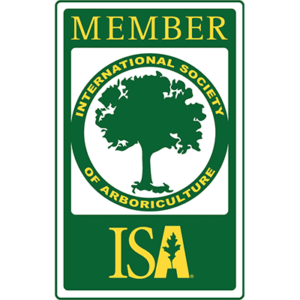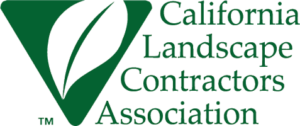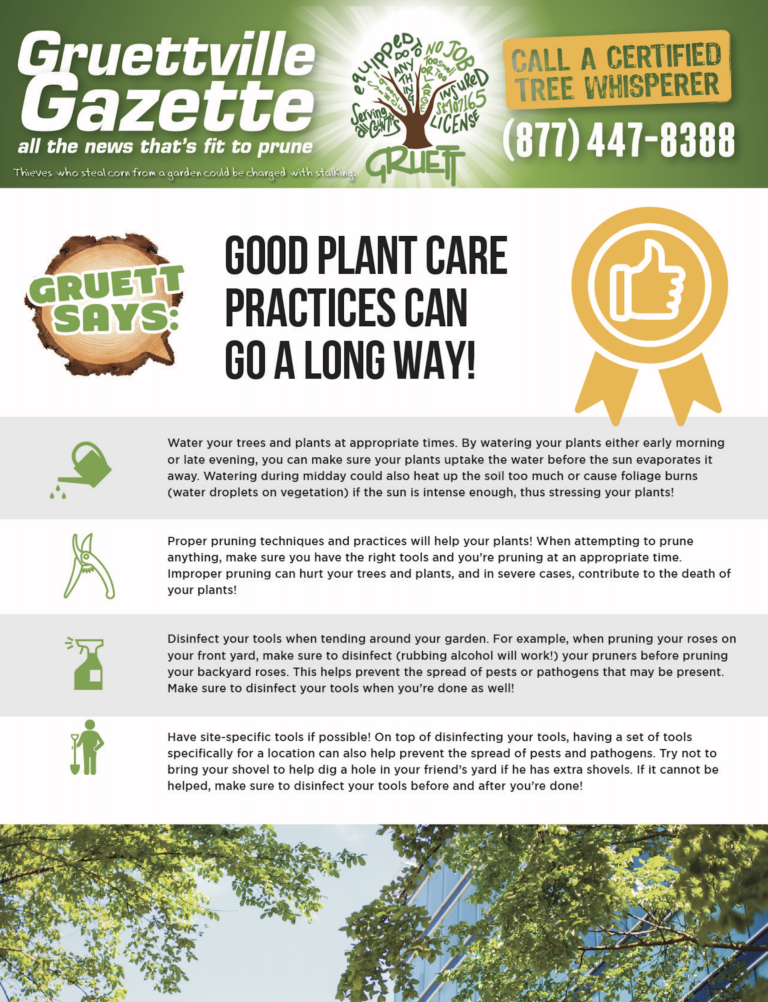Gruett Tree Company Pruning Standards

Tree pruning is done to remove deadwood or to address structural problems by selectively removing live branches. Pruning is a tree maintenance practice and is necessary to maintain the health and safety of urban trees. An educated decision is needed before removing live branches as this will take away resources from overall tree health. It is important that the benefits of live wood pruning outweigh the costs to the tree. An arborist must have a thorough understanding of tree physiology and the affects pruning will have on the health of the tree.
At Gruett we provide science-based pruning to maintain tree health. Our accepted pruning protocols exceed the current National Standards set by the International Society of Arboriculture and the American National Standards Institute. Pruning is a science, not an art. Trees are living organisms that need to maintain their structure to support their ability to acquire sunlight, fight infection, and flourish. There are many forms of branch removal that do not meet our criteria for supporting the health of trees. It is our position, as your professional resource on tree health, that our pruning practices will not harm the health of your trees.
Gruett’s scientific pruning services include:
DEADWOOD PRUNING
Dead limbs provide a pathway for infection to enter the main trunk of a tree. By removing the dead limbs the tree will have a better chance to compartmentalize the wound and prevent the spread of infection. It is
very important to retain branch collars to protect the tissue behind the wound from becoming infected.
Gruett has three categories for Deadwood pruning:
Coarse Deadwood Pruning (CDP)
The removal of dead branches that are 2 inches diameter at the based or larger. This includes dead stubs.
Medium Deadwood Pruning (MDP)
Removal of dead branches that are 1 inch diameter at the base and larger, including all dead stubs.
Fine Deadwood Pruning (FDP)
The removal of dead branches that are 1/2 inch diameter and larger. This includes any dead stubs.
LIVEWOOD PRUNING
At times, trees will grow in ways that are detrimental to the integrity of their structure. Trees in urban settings will also need to be pruned to create a safer environment for people. When pruning is required to deal with these “structural” issues, it is often necessary to prune “live” tissues from a tree. When pruning live tissues we always prune to create good centers for wound protection.
Gruett’s five categories of Livewood pruning are:
Crossed Branch Pruning (CrBP)
The removal of branches that are currently touching each other or are likely to come into contact within the next several years. Limbs that rub against each other create wounds that will never heal. This situation raises the potential for infection of the wood and can result in a less healthy tree with a potential structural defect.
Stacked Branch Pruning (StBP)
Branches that grow immediately above or below other branches are termed “stacked”. The connection of these branches to the main limb or trunk is often less secure than branches growing individually due to the development of “included bark”. Included bark will form as the bases of branches grow together. Bark is not structural tissue, so the union of the two branches is never structurally sound. Also stacking can result in branch rubbing and the development of wounds that raise the potential for infection and structural defects.
Subordinated Branch Pruning (SbBP)
Subordination pruning is very successful in training young trees to create a good structural form with one dominant leader. It can also be used on older trees to maintain sound branch structure, reduce weight loading, and maintain physical balancing forces within the canopy of the tree.
On occasion a tree will produce two branches at a junction that both grow as primary branches. When this occurs we get a condition called “co-dominance”. Co-dominant branches never create a branch collar which should serve as the wound protection zone. When a co-dominant branch is pruned there is no protection zone to prevent decay from entering the other branch and the main stem of the tree. In addition, co-dominant branches also create included bark and have a weak attachment.
Subordinated branch pruning is applied to reduce the growth of one of the competing leaders and make it subordinate to the branch we want to maintain. The pruning cuts are applied to no more than one third of the branch to be removed. This provides enough live tissue to prevent decay from moving down through the branch too quickly. Over a period of several years, a branch collar will form on the subordinated branch creating the protection zone. After the branch collar is formed the limb can be removed in it’s entirety with a significantly reduced risk for providing an entrance for decay organisms into the remaining branch and trunk of the tree.
Hazard Branch Pruning (HzBP)
In situations where a branch constitutes a danger to people or property, pruning of a live limb may be necessary. Hazard pruning follows the same protocols as other live wood pruning, including leaving the wound protection zone (branch collar) intact, unless it is non-existent or compromised. Damage from storms or hazards created due to long-term decay fall under this category of pruning. All the previous pruning categories are designed to prevent trees from getting to this level of pruning.
Raised/Clearance Branch Pruning (RsBP)
Raised branch pruning is not done for the “health” of the tree, but is performed to reduce interference with objects in the urban environment. Safety concerns, such as clearing stop signs and traffic lights fall under this category. Removing limbs in direct contact with roof tops and creating a separation between buildings and trees for security and maintenance reasons also fall into this category. Raising the canopy of a tree for purely aesthetic purposes is not in the best interest of a trees’ health and is not recommended. In all situations, our arborists will try to prune the smallest limbs and smallest amount of canopy to make the least impact on tree health when we practice raised branch pruning.
Glossary Terms:
Compartmentalize–the formation of compartments to prevent the spread of fungi to adjacent cells
Structural–the branching formation of a tree and it’s ability to hold together
Branch collar–the area of a branch that prevents fungi from entering the main trunk of a tree. Characterized by swelling or wrinkling bark tissue
Detrimental to the integrity of their structure–causes weakening of the branch or tree, potentially leading to hazardous conditions
Live tissues–the transport system of a tree (the cambial tissues, xylem & phloem contain living cells) located just under the bark, the wood and bark are non-living tissues
Structural defect–any problem with a trees branching system that can result in breakage, damage or failure
Included bark–bark that is grown over by living tissue that weakens the attachment of the limb to the tree
Subordinate-Structural–The branching formation of a tree and its ability to hold together
Weight loading–the amount of weight distributed along or at the end of a branch
Wound protection zone–the area of compartmentalized tissues that protect the non-damaged part of the tree from becoming infected
When caring for urban trees it is important to make a complete evaluation of all environmental conditions to accurately diagnose all stress factors and prescribe care based on specific circumstances. This prescriptive care will help your tree meet its full potential.this
Tree Pruning
Our arborists are educated in how trees grow and what makes branches strong or weak. We know how to correct problems.
Arborist Services
Our licensed and certified arborists will design a program for healthy trees and shrubs that will beautify your yard for years to come.
Tree Healthcare
It can take years to nurse a sick tree back to health. Call Orange County’s # 1 authority in tree care for a plan that gives you healthy trees that will beautify your yard for as long as you live in your home.
Tree & Stump Removal
Big or small, Gruett Tree Company safely removes trees and stumps from your yard.
Learn more >>
